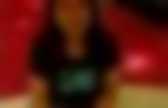

Bilateral Filtering. Computer Vision (UW CSE 576) Code For Dijkstra’s Algorithm In C++ « Data Structures through C & C++ for beginners. Note: Because of encoding problems the following code may not work. If it doesn’t work download the code from the following link. Right click on the link and click on ‘save target as ‘ and save the text file Download the code: dijkstra.txt Title: Dijkstra’s single source shortest path algorithm Author: Vinodh Kumar B Description: adjMatric[][] : This array is used to store the adjacency matrix of the input graph predecessor[] : This array is used to store the predecessor elements. predecessor[i] is the previous element in the path from source to current node i. ex: If 1->2->4->3 is the shortest path from node1(source) to node 3. predecessor[3] is 4. distance[] : This array will store the minimum distance from the source to corresponding node.
#include<iostream> #define INFINITY 999 using namespace std; void Graph::initialize() { for(int i=0;i<numOfVertices;i++) { mark[i] = false; predecessor[i] = -1; distance[i] = INFINITY; } distance [/source] cout<<”->”<<distance[i]<<endl; } } Like this: Maze Solving Algorithm. Maze solving algorithm. There are a number of different maze solving algorithms, that is, automated methods for the solving of mazes. The random mouse, wall follower, Pledge, and Trémaux algorithms are designed to be used inside the maze by a traveler with no prior knowledge of the maze, whereas the dead-end filling and shortest path algorithms are designed to be used by a person or computer program that can see the whole maze at once.
Random mouse algorithm[edit] This is a trivial method that can be implemented by a very unintelligent robot or perhaps a mouse. It is simply to proceed in a straight line until a junction is reached, and then to make a random decision about the next direction to follow. Although such a method would always eventually find the right solution, this algorithm can be extremely slow.
Wall follower[edit] Traversal using Right-hand rule Maze with two solutions. Solution to above maze. Another perspective into why wall following works is topological. Pledge algorithm[edit] See also[edit] Computer Algorithm Can Recognize Sarcasm (Which Is Just Soooo Cool ... The pursuit of machine intelligence means we have to come up with ways to communicate with our computers in a way both entities can understand. But while computers process verbal commands in a straightforward fashion, humans tend to use more sophisticated speech forms, employing slang or symbols to convey an idea. So an Israeli research team has developed a machine algorithm that can recognize sarcasm. SASI, a Semi-supervised Algorithm for Sarcasm Identification, can recognize sarcastic sentences in product reviews online with pretty astounding 77 percent precision. To create such an algorithm, the team scanned 66,000 Amazon.com product reviews, with three different human annotators tagging sentences for sarcasm.
The team then identified certain sarcastic patterns that emerged in the reviews and created a classification algorithm that puts each statement into a sarcastic class. The algorithms were then trained on that seed set of 80 sentences from the collection of reviews. Algorithms - Arun Kalyanasundaram. Following are the assignments and projects done as part of this course.
Finding the Shortest Path Using Ant Colony Optimization The project aims to find the shortest path between two objects in the presence of obstacles when the coordinates one of the objects is unknown. We solve this by simulating the behavior of Ants in finding food. When an ant returns to its colony after finding food, it lays down a trail of chemical called pheromone along its path which attracts other ants to follow the trail. The pheromone evaporates over time and eventually, the trails along all paths except the shortest path (may not be the global minimum) evaporates. Our implementation provides several tunable parameters that give the simulation a finer control. In our simulation, the GUI displays ants as black dots, food as blue rectangular block, pheromone trails change their color as it evaporates, where red trails imply highest intensity which fades away as it evaporates.